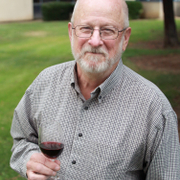- Level Foundation
- المدة 14 ساعات hours
- الطبع بواسطة University of California, Davis
-
Offered by

عن
With its roots in ancient cultures as early as 6,000 BC, wine has long been part of the human experience. Today, increasing worldwide interest in wine and its complexities and varieties has created an international market valued at $304 billion annually. For the learner who is just getting started in the study of wine, this course will help you take the first steps toward understanding the physiological process of wine tasting. The first module will explore types of wine and help you set up your own tasting. You'll also begin to build a sensory vocabulary. In module 2 you will review classic wine types of the world and set up flights of specific wines. Later we'll examine the various faults and defects that can appear in wine as well as techniques for spotting problems. In week 4 we'll delve into the complex world of wine and food pairings, and its "seven deadly sins." The course will culminate in a peer review project in which you will apply the knowledge and sensory techniques you have developed throughout the course to assess a specific wine.الوحدات
Getting Started
1
Discussions
- Your Learning Goals
1
Videos
- Wine Tasting: Sensory Techniques For Wine Analysis
1
Readings
- Before You Begin...
Wine Styles
5
Discussions
- Buying Wine Glasses (Activity)
- Selecting Wines For This Module (Activity)
- First Taste
- Comparison of Tastes
- Final Thoughts?
17
Videos
- Wine Styles Introduction
- Introduction to Wine Sensory
- Wine Glasses
- Basic Wine Types
- Old World Versus New World Wines
- Climate and Style
- Selecting Wines for this Course
- Formal Wine Tasting Set-Up
- The Tasting Grid
- Wine Clarity
- Wine Color
- The First Sniff
- The First Taste
- The Second Taste
- Wine Texture
- Formal Wine Evaluation (Whites)
- Formal Wine Evaluation (Reds)
Review
1
Assignment
- Module 1 - Wine Styles
Wine Flavor and Aroma
1
Discussions
- Aroma Wheel Exercise
5
Videos
- Wine Standards and Varietals
- The Aroma Wheel
- Grape Varietals
- Bordeaux Reds and Whites
- Selecting Typical Wines
1
Readings
- Selecting Wines for This Module
White Varietals
10
Videos
- Chardonnay
- Chenin Blanc
- Sauvignon Blanc
- Semillon
- Noble Rot
- Riesling
- The International Riesling Foundation & Trimethyldihydronaphthalene
- Gewürztraminer
- Pinot Grigio
- MLF and Buttery
Red Varietals
6
Videos
- Cabernet Sauvignon
- Merlot
- Pinot Noir
- Syrah / Shiraz
- Grenache
- Sangiovese
Setting Up a Tasting
2
Discussions
- Your Flight of White Experience
- Your Flight of Red Experience
3
Videos
- Descriptive Analysis
- Flight of Whites
- Flight of Reds
Review
1
Assignment
- Module 2 - Wine Flavor/Aroma Standards
Common Wine Faults
2
Discussions
- Fault Tests
- Sommelier Field Trip (Activity)
13
Videos
- Common Wine Faults Introduction
- Common Wine Faults
- Beauty is in the Nose of the Beholder
- Threshold
- Oxidation Faults
- Vinegar
- Reduction Faults
- Oxidation and Acetic Acid Faults
- Sulfites and Sulfides
- Microbial Faults
- Cork Taint
- Sulfites
- Common Wine Faults Summary
1
Readings
- Materials to Acquire
Review
1
Assignment
- Module 3 - Common Wine Faults
Food and Wine Pairing Principles
9
Videos
- Food and Wine Pairing Introduction
- Pairing Wine and Foods
- Deconstructing the Flavors
- Bridging Ingredients
- Food Weight
- The Cherry Tomato Experiment
- Balance
- Sip, Bite, Sip
- Grading Food and Wine Interactions
1
Readings
- Materials For This Module
Food and Wine Pairing Activity
2
Discussions
- Food and Wine Pairing Prediction
- Food and Wine Pairing Reflection
2
Videos
- Food and Wine Pairing Activity
- Food and Wine Pairing Activity Continued
Review
1
Assignment
- Module 4 - Wine and Food Pairing
Peer Review Project
1
Peer Review
- Analytical Wine Tasting Report
1
Videos
- Analytical Wine Tasting Report
Course Summary
1
Discussions
- Reflection
Auto Summary
"Wine Tasting: Sensory Techniques for Wine Analysis" is a foundational personal development course offered by Coursera. Ideal for beginners, it explores the art and science of wine tasting, including wine types, sensory vocabulary, and defect detection. Over 840 minutes, learners will dive into global wine varieties, set up tastings, and master food pairings. The course concludes with a practical peer review project. Subscription options include Starter, Professional, and Paid tiers. Perfect for wine enthusiasts eager to deepen their understanding and appreciation of wine.

John Buechsenstein


